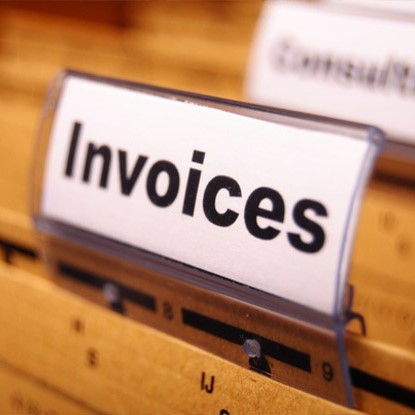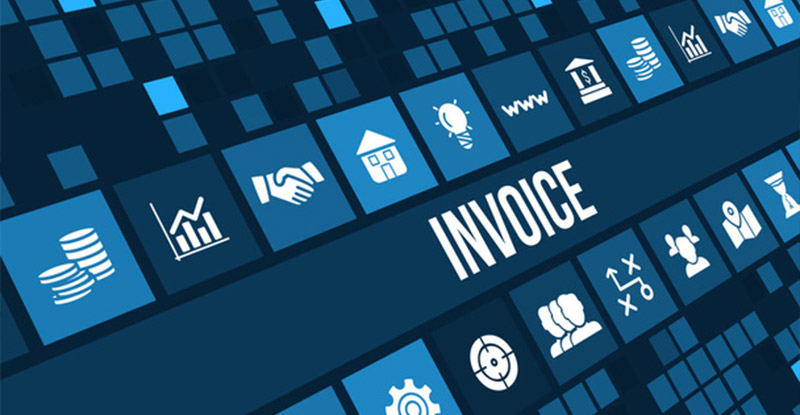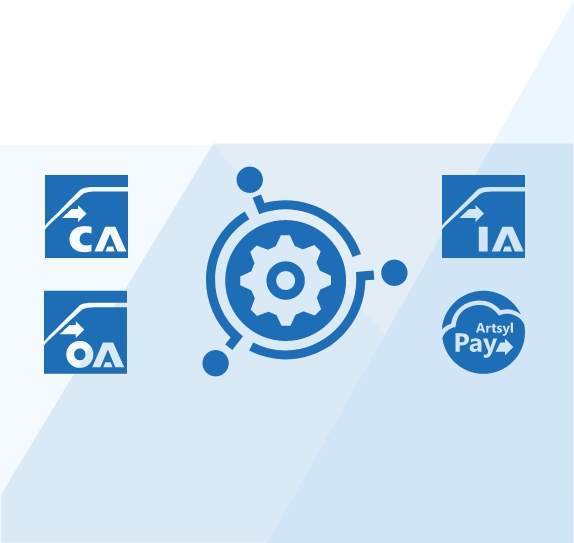In today’s fast-paced business environment, the efficiency of administrative processes can significantly impact an organization’s bottom line. One such critical process is invoice management. Electronic Data Interchange (EDI) has revolutionized the way invoices are sent and received, but even EDI is not without its challenges. Fortunately, solutions like InvoiceAction can optimize and streamline invoice processing, ensuring accuracy and efficiency. In this article, you will learn:

Unlike traditional EDI, our solution offers advanced data validation and error-checking to ensure your invoices are accurate and compliant with business rules. Reduce manual reviews and boost efficiency today.
Understanding EDI: What Is Electronic Data Interchange
EDI, or Electronic Data Interchange, is a system that allows businesses to exchange documents in a standardized electronic format. When a supplier sends an invoice via EDI, the receiving company gets this invoice as an electronic data file.
EDI (Electronic Data Interchange) Definition
A standardized method for exchanging business documents between organizations electronically, enabling the automatic processing of transactions such as invoices, purchase orders, and shipping notices. The following types of documents are best suited for EDI processing:
- Invoices: A commercial document issued by a seller to a buyer, detailing the products or services provided, quantities, and agreed-upon prices. It serves as a request for payment.
- Purchase Orders: A document sent by a buyer to a seller specifying the products or services they wish to purchase, including details such as quantities, specifications, and prices.
- Sales Orders: A sales order is a document generated by a seller to confirm a customer’s purchase of goods or services. It includes details such as item descriptions, quantities, prices, and delivery dates. Sales orders serve as a contract between the buyer and seller, ensuring that both parties agree on the terms of the sale.
- Shipping Invoices: A shipping invoice is a document issued by a seller that accompanies goods during transit. It lists the items being shipped, their quantities, prices, and any shipping charges. This invoice provides proof of shipment and is used for customs clearance and billing purposes.
EDI and Your AP Department
EDI (Electronic Data Interchange) acts like a digital translator for your Accounts Payable (AP) department, streamlining invoice processing and saving you time and money. Here’s the breakdown.
Traditionally, invoices arrive as paper documents or PDFs. These need manual data entry, which is prone to errors and time-consuming. Basically, EDI eliminates paper. Suppliers send invoices electronically in a standardized format.
READ MORE: How to Build an Automated Invoice Processing Workflow
Speaking the Same Language
Different companies use different accounting systems. EDI translates the invoice data into a format your system understands, so no more re-keying information.
Once translated, the data can be automatically matched against purchase orders and receiving reports. This reduces errors and speeds up approvals. With everything digital and standardized, approvals can even be automated based on pre-set rules.
There are multiple benefits. For you as the head of the AP department, the use of EDI means faster automated invoice processing, fewer errors, reduced costs, and improved cash flow visibility. For suppliers, the benefits of electronic data interchange include quicker payments and less paperwork.
Electronic Data Interchange in Action
The process is relatively straightforward. You send a purchase order electronically to your supplier. The supplier receives the order and uses it to create an invoice in a standardized EDI format. The supplier transmits the electronic invoice to you.
Your EDI system translates the invoice and automatically populates it in your accounting software. The invoice is matched against the purchase order and receiving report (if applicable). If everything matches, the invoice is automatically approved for payment.
However, not all suppliers are EDI-enabled. Talk to your key vendors and see if they’re on board. There are costs associated with setting up and maintaining an EDI system. Still, the long-term benefits often outweigh the initial investment.
Overall, EDI can be a game-changer for your AP department, making invoice processing faster, more efficient, and less error-prone. Unlike traditional methods such as PDFs, paper, or fax, EDI invoices are already digital, eliminating the need for specific technology such as Optical Character Recognition (OCR).
OCR (Optical Character Recognition) is a technology used to convert different types of documents, such as scanned paper documents or PDFs, into editable and searchable data. OCR is not needed with EDI since data is already in a digital format. EDI eliminates the associated issues with recognition errors and uncertain characters.
Avoid costly errors and discrepancies in your invoicing process. InvoiceAction provides comprehensive cross-checking capabilities that EDI alone can’t match. Ensure your invoices align with purchase orders and receive goods every time.
Book a demo now
EDI Integration with Business Systems
Integration is the process of linking various IT systems and software applications to function as a coordinated whole, enabling seamless data exchange and operational efficiency. In the context of EDI, integration ensures that electronic documents are automatically routed and processed within existing business systems like ERP, CRM, and DMS.
Why Use ERP (Enterprise Resource Planning) Integration with EDI?
Enterprise Resource Planning (ERP) is a type of software that organizations use to manage day-to-day business activities, such as accounting, procurement, project management, and supply chain operations. ERP systems integrate various business processes into a single, unified system, providing real-time data and insights.
In the context of EDI, ERP systems facilitate the seamless exchange and processing of electronic documents. This integration helps improve efficiency, accuracy, and decision-making across the organization.
LEARN MORE: The Human Touch in Automated Invoice Processing
What Is DMS (Document Management System)?
A Document Management System (DMS) is a system used to track, manage, and store documents, reducing paper usage and improving accessibility and efficiency. DMS solutions provide features such as version control, document indexing, and secure access, ensuring that documents are easy to retrieve and manage.
Integration with EDI allows for the automated handling of electronic documents, further streamlining document workflows. This enhances overall business operations by ensuring that critical documents are well-organized and readily available.
What is CRM (Customer Relationship Management)?
Customer Relationship Management (CRM) software helps businesses manage interactions with current and potential customers, ensuring effective communication and relationship building. CRM systems consolidate customer information into a single database, making it easier to track customer interactions, sales, and support activities.
When integrated with EDI, CRM systems ensure that customer-related transactions are consistent and up-to-date across platforms. This integration helps improve customer service, sales efficiency, and overall customer satisfaction. This interconnectedness enhances data accuracy, reduces manual intervention, and improves overall invoice processing efficiency.
InvoiceAction goes beyond EDI by automatically tracking and applying early payment discounts. Save money and optimize cash flow without the hassle of manual calculations. Start maximizing your savings now!
Book a demo now
The Challenges of EDI Invoices
While EDI offers a digital format, which is inherently more efficient than paper-based systems, it doesn’t automatically ensure invoice data accuracy from a business perspective. Here are some common issues that can arise with EDI invoices:
Mismatch with Purchase Orders
The invoice received may not correspond to the previously placed purchase order, leading to discrepancies in expected vs. billed items.
Incorrect Pricing
The invoice might not reflect the agreed-upon prices, resulting in potential overcharges.
Unreceived Goods
An invoice could request payment for goods not yet received at the warehouse.
Calculation Errors
Errors in mathematical calculations, taxes, and additional costs like transportation and fuel surcharges can occur.
The Solution: InvoiceAction
This is where InvoiceAction steps in, providing a comprehensive solution to automate invoice entry and ensure data accuracy. InvoiceAction offers precise data control regardless of whether the invoice arrives in EDI format, on paper, or as a PDF file. Here’s how InvoiceAction enhances the invoice management process:
Deep Integration
InvoiceAction integrates seamlessly with accounting systems and other business tools such as Document Management Systems (DMS), Customer Relationship Management (CRM) systems, and databases. This integration enables comprehensive cross-checking and validation.
Two-Way and Three-Way Matching
InvoiceAction performs two-way matching (comparing the invoice with the purchase order) and three-way matching (comparing the invoice with the purchase order and the received goods). This ensures that all details are correct and consistent with the original agreements.
Error Detection
The system automatically identifies and flags errors in pricing, calculations, taxes, and additional charges, preventing costly mistakes.
Early Payment Discounts
InvoiceAction tracks the terms of early payment discounts, helping companies take advantage of these opportunities and avoid processing delays that lead to late payment fees.
Financial Compliance
By ensuring that invoices are correctly entered into accounting (ERP) systems and matched accurately, InvoiceAction supports compliance with financial accounting requirements.
Benefits of Using InvoiceAction
- Improved accuracy: Eliminates manual entry errors and ensures data consistency.
- Cost savings: Identifies discrepancies and leverages early payment discounts.
- Efficiency: Automates the invoice processing workflow, reducing administrative burden.
- Compliance: Maintains adherence to financial regulations and internal policies.
Integrate seamlessly with your existing ERP, CRM, and DMS systems using InvoiceAction. Enjoy enhanced data accuracy and consistency beyond what EDI alone can provide. Simplify your compliance processes and keep your business running smoothly.
Book a demo now
EDI and Invoice Processing 101: Key Terms to Know
Why Does Invoice Processing Use Two-Way Matching?
Two-way matching is a process that compares the invoice received from a supplier with the purchase order to ensure that the details match. This verification step checks for consistency in quantities, prices, and product descriptions. If the data matches, the invoice is approved for payment; if not, discrepancies are flagged for resolution. This method helps prevent overpayments and ensures that invoices align with agreed-upon terms.
What is the Value of Three-Way Matching?
Three-way matching is an enhanced verification process that compares the invoice, purchase order, and receiving report to ensure all details are consistent and accurate. This comprehensive check confirms that the invoiced items have been received and match the ordered quantities and prices.
By incorporating the receiving report, this process adds an additional layer of validation, reducing the risk of errors and fraud. It ensures that companies only pay for goods that have been ordered and received in satisfactory condition.
FIND OUT MORE: Invoice Automation: What Is It and What Are the Benefits?
What Are Early Payment Discounts?
Early payment discounts are incentives offered by suppliers to buyers for making payments ahead of the invoice due date. These discounts encourage prompt payment, benefiting both the supplier with improved cash flow and the buyer with cost savings.
Invoice automation systems like InvoiceAction can automatically track and apply these discounts, ensuring that companies do not miss out on potential savings. This helps optimize financial management and maintain good supplier relationships.
What Is a Fuel Surcharge?
A fuel surcharge is an additional fee charged by suppliers to cover the fluctuating costs of fuel, which can impact transportation expenses. This surcharge is typically added to the total invoice amount and varies based on current fuel prices.
Accurate calculation and verification of fuel surcharges are essential to ensure that they align with agreed-upon terms. EDI systems help manage and validate these surcharges, preventing discrepancies and overcharges.
Why Is Cross-Checking Important?
Cross-checking is the process of verifying the data in an EDI invoice against other business documents and systems to ensure accuracy and consistency. This involves comparing details such as quantities, prices, and terms with purchase orders, receiving reports, and other relevant records.
Effective cross-checking helps identify and resolve discrepancies before they lead to payment errors or financial losses. Automated systems like InvoiceAction enhance this process by performing thorough validations quickly and accurately.
What Is Data Validation?
Data validation ensures that the information within EDI documents is accurate, complete, and compliant with business rules before it is processed. This step is crucial for maintaining data integrity and preventing errors in financial transactions.
Validation checks can include format verification, consistency checks, and compliance with regulatory standards. Automated data validation helps streamline the invoicing process, reducing the need for manual reviews and corrections.
What Is EDI 810?
EDI 810 is the specific transaction code for an electronic invoice within the EDI standards, used to bill customers for goods and services. This standardized format includes all necessary details such as item descriptions, quantities, prices, and payment terms.
EDI 810 transactions ensure that invoices are transmitted quickly and accurately between trading partners. Using this format helps automate and streamline the invoicing process, reducing errors and improving efficiency.
Final Thoughts
Incorporating EDI for invoice management is a significant step toward modernization and efficiency. However, to fully reap the benefits, businesses need a robust system like InvoiceAction. By automating invoice entry and providing thorough data validation, InvoiceAction ensures that your invoice processing is accurate, efficient, and cost-effective. This, in turn, allows your organization to focus on strategic growth and operational excellence.
Eliminate processing delays and late payment fees! InvoiceAction automates your invoicing process, ensuring timely payments and avoiding penalties. Enhance your financial management today.
Book a demo now




 Invoice Processing in Education Industry
Invoice Processing in Education Industry OCR for Invoice Processing
OCR for Invoice Processing Invoice Processing for Microsoft Dynamics 365
Invoice Processing for Microsoft Dynamics 365 Invoice Automation: How to Automate Invoice Processing
Invoice Automation: How to Automate Invoice Processing Invoice Processing in Accounts Payable Automation
Invoice Processing in Accounts Payable Automation Automated Invoice Processing: Maximize ROI
Automated Invoice Processing: Maximize ROI